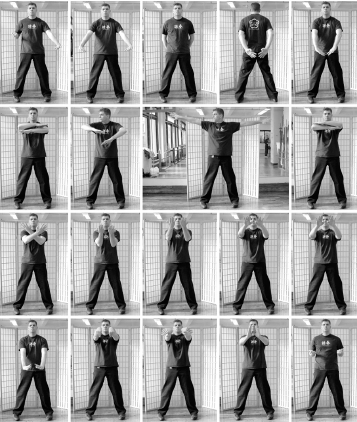Capturing a moment in time.

I remember learning the concept behind chi sao (sticking hands) in Yongchuan or Wing Chun.
Although many teachers insist on having one learn and memorise the different defensive positions found in Wimg Chun forms I have found that these positions are naturally occurring events in a sparring match if a student understands the basics.

Later- when I have learnt about Shaolin force training, though, I have realised that we cannot just discard basic movements or positions in martial arts. They are practiced repeatedly for a reason.

Wing Chun is certainly not the only Chinese martial art that has fixed positions that one learn to move from the one to the other. In fact- Karate and Taekwondo forms have the same thing.

Each of these positions represent a certain moment in time. It may be the moment your attacker's arm got lifted to expose his ribs, his fist got knocked downward to expose his upper body or face or that moment of having created just enough space for that side kick...
 One of the effects of slowing these moments down and looking at them a bit closer is that one can easily find the move that is to follow that particular moment. The benefit of not flailing around in a panic when you are under attack is certainly something worth having if you are to spar with fellow students or defend yourself against an actual attacker.
One of the effects of slowing these moments down and looking at them a bit closer is that one can easily find the move that is to follow that particular moment. The benefit of not flailing around in a panic when you are under attack is certainly something worth having if you are to spar with fellow students or defend yourself against an actual attacker.
I was once knocked off balance as I circled my sparring partner's punch and blocked it. The moment the block made contact I felt that I might have been better off not blocking at all.

Later on- having analyzed the incident- I realised that I was blocking at a moment when both my feet were airborne. I was not even aiming to leap, but my hurried footwork resulted in a very low leap that had compromised my stability for that moment.
That particular problem got solved by replacing the sharp hip twist that I have used along with its footwork with a movement called the "Unicorn Step" as I block and then follow it through with a step past my opponent.
Breaking down the movement had provided me with the necessary clarity to see where I have gone wrong. It can also show you where you could go wrong before you even fight.
Actual fighting is not force training, however...
It is important to make these positions and movements part of you so that they can be forgotten. Then- when your hands go where they are supposed to and your feet find their targets without you telling them to- these movements will occur by themselves and these positions become part of the flow of movement in the fight.
Starting from this thoughtless place, though, without having first internalised every movement and position may just result in you landing on your butt...
That's it for this week. Enjoy your weekend and see you again soon! :)





Comments
Post a Comment